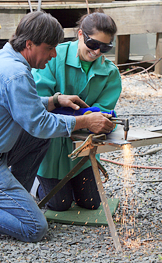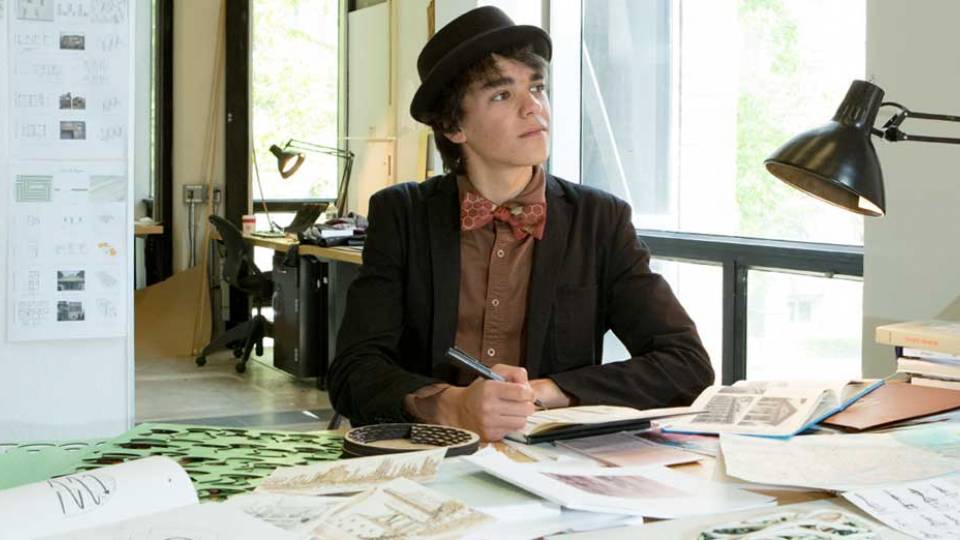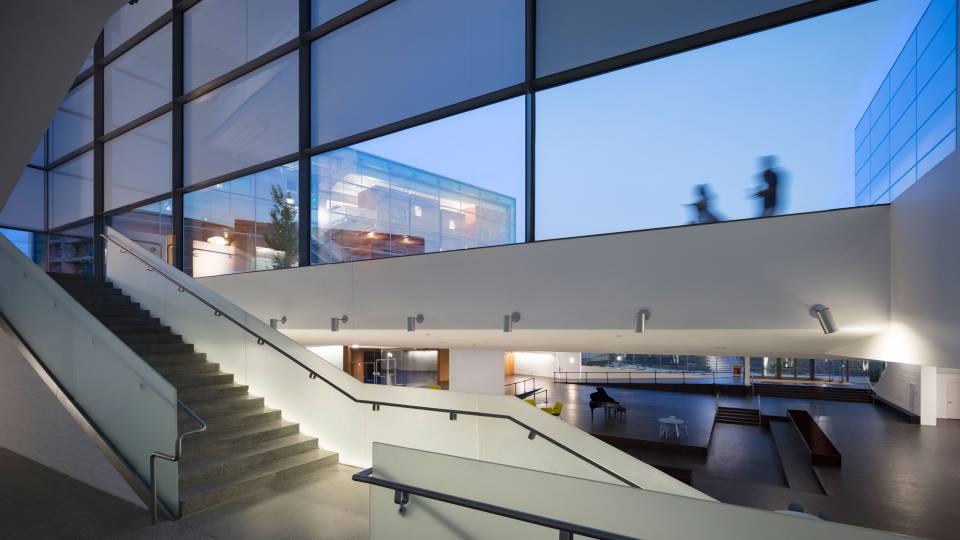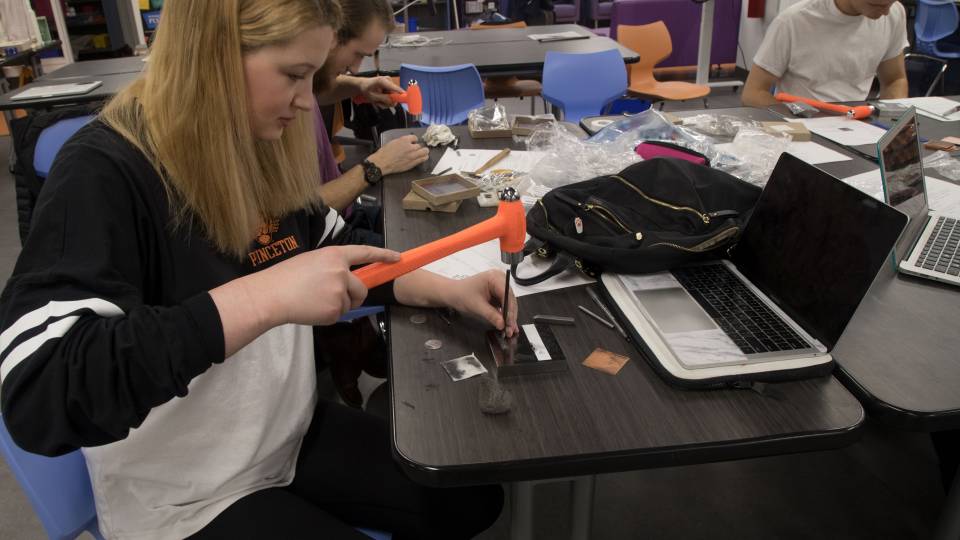Kneeling on the gravel driveway outside the Architecture Laboratory, junior Jesse Palermo leaned over a thin square of steel and steadied his grip on an oxy-acetylene torch.
Standing behind him was Steve DeLeo, a welder in the University's facilities department who was guiding Palermo and other students through their first attempts to cut metal. "You don't want to melt the steel -- you want to cut it," DeLeo cautioned. "Bring the flame down."
After Palermo adjusted the acetylene valve to reduce the flame, DeLeo instructed him to wait until the heat turned the metal cherry red and then release a high-pressure blast of oxygen to cut the steel. As the edge of the steel began to glow, DeLeo commanded, "Push the air!" Sparks shot from the metal as Palermo squeezed the oxygen blast trigger and slowly moved the flame across the steel until a strip fell to the ground.
DeLeo inspected the cut. "Perfect," he said, "You got a pretty straight line." With a satisfied smile, Palermo rose and handed the torch back to DeLeo, who moved on to his next student.

DeLeo and colleagues Bob Macfarlan and Al Stevens from the University's heating, ventilation and air conditioning (HVAC) shop spent several hours over two weeks in May working with students enrolled in a junior studio design course, "Dynamical Logics in Architecture." The course, taught by assistant professor of architecture Jesse Reiser, involves a series of intensive design projects, including a final assignment to design and build a chair. Some of the students who chose to build metal chairs received hands-on lessons in metal cutting and welding from the University's skilled tradesmen to help complete their final projects.
John Hunter, senior technician in the Architecture Laboratory, said, "The guys loved working with the students. We're thinking about expanding it next year and offering a three-week tutorial."
DeLeo said he enjoyed showing the students the finer points of his trade. "When you get a welding torch and a piece of steel, you can build a lot of things -- from art to whatever you need," he said.

During one session, DeLeo and Stevens assisted Elissa Devos with her final project, a lounge chair made from several metal loops and Plexiglas plates. To create the chair's frame, they welded small pieces of pipe onto a table, around which they bent hot metal bars to match the shapes Devos had designed.
"This is old-fashioned blacksmithing," DeLeo said. "I haven't done this in a long time."
For his final project, Palermo designed a love seat that combines 11 strips of metal with a bungee suspension system to create "a built-in system of flexibility so it fits your body." While he previously had done some welding, Palermo said, "It's something I'd like be able to do with perfect technique, so I came down here to see how the professionals do it."
During the first session, junior Becky Quintal admitted that she was afraid of fire but that she needed to learn cutting and welding techniques for her final project, a wire-framed chair spanned by a spandex-like material.
"This is going to be a big endeavor for me," she said. "I didn't want to limit what I was going to do. I'll suck it up, but it definitely scares me."
A short time later, DeLeo helped Quintal operate the oxy-acetylene torch and an arc welder, while emphasizing the importance of getting comfortable with the tools. Quintal's nervousness began to fade as she accomplished each task.
"After working with them about three times I definitely felt more comfortable around the torch," Quintal said. "I am so grateful that we were able to get help from the welders. Not only did I learn how to weld and cut metal, but it helped me further understand the capabilities of the material."
About a week after her first attempt at welding, Quintal finished her chair's frame. "It turned out nearly identical to what I had planned on the computer and modeled in small scale," she said. "This experience was invaluable, and I hope that subsequent studio groups will have this great opportunity."







